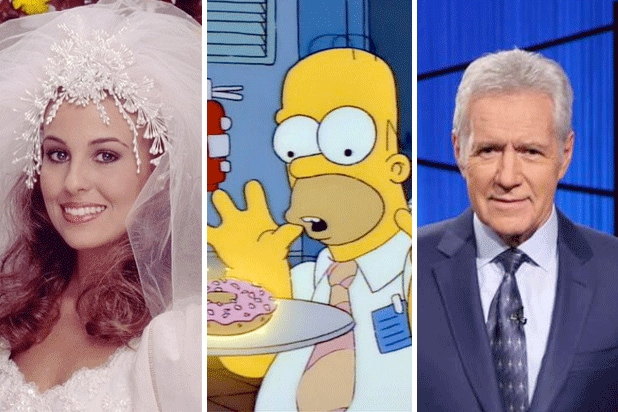
Amazon Prime offers a wide range of streaming options that will allow you to enjoy a wide variety of sci-fi content, regardless of whether you are looking to watch something while you wait to see if a movie is available, or catch up on old favorites. You can find something light and digestible, or something that explores difficult concepts and themes. There are plenty of sci-fi shows available on Prime.
Amazon Prime: Best Science Fiction Series
Amazon Prime's wide range of sci-fi series means that there are always new and exciting shows to keep you entertained. This list will appeal to everyone, regardless of whether you are a fan or not.
Star Trek, The Expanse and Westworld are among the most popular sci-fi series. But there are other shows on Prime that are just as good. Here are the best sci-fi series available on Prime. They will make you feel completely immersed in their world, from dark dystopias to far-fetched adventures.

Star Wars: The Next Generation and Battlestar Galactica are three great sci-fi series that will keep your attention. Prime has many more sci-fi shows that you should watch if your goal is to lose yourself in the sci fi universe.
Deep Space Nine is a classic sci fi series that was created in the late 1970s and still considered one of the best. All four seasons are now available to stream. Although it is a bit outdated in parts, Deep Space Nine is a great show for sci-fi fans who love a good plot with a well-rounded cast.
Eureka, a classic sci-fi show that has been adapted numerous times, is also a good choice for fans. Although the original series reunited Martin Landau and Barbara Bain, the effects are still very relevant. This is an excellent choice for anyone looking to relive sci-fi's golden age before Star Wars.
The Peripheral is a new scifi series by the creators of HBO's Westworld. It is a great choice for those who love sci-fi shows with exciting ideas. Chloe Grace Moretz plays Flynne. She's a gamer who is invited to play a virtual reality game which flings her head-first into a future.

Prejudices run rampant in a world where humans rule the planet and have begun to colonize it. An alien spacefaring species arrives on Earth, causing political chaos that leads to the rise and rise of an idealist determined to do what is right.
The series has many elements, but it is not difficult to follow. You will be kept guessing right away. The acting is good and the plot has some interesting twists. This makes it an excellent choice for anyone looking to enjoy a great sci-fi series that's easy to follow.
FAQ
What does it cost to produce a commercial?
Producing a commercial can be expensive. The amount depends on the length of the spot, the number of actors involved, the location where the shoot takes place, etc.
A 30-second commercial usually costs $20,000-40,000.
Does TV affect sales?
Because TV allows customers to see the products available, it can affect sales.
Consumers compare prices before buying a product. A product advertisement might make consumers think, "I wonder what I could afford?"
How does TV Advertising work
Television advertising is an effective way to reach consumers when they watch television. It's also cost-effective. Commercial breaks are the most commonly used form of advertising on television. These usually last for 30 seconds but may be extended if the commercial is about a special event or sporting match. Companies often sponsor commercials to promote their products and services. They pay for airtime during these breaks. Some commercials show product information and others simply display images or music. In addition to this, many programs now have 'product placement' where brands appear within the program itself. This might involve the brand being featured in a scene or providing background information on the product.
What are the differences between commercials?
The three main types of commercials are TV Commercials, Radio Commercials, and Print Ads.
TV Commercials are usually 30 seconds long. They're often used for brand awareness campaigns.
Radio commercials are typically longer (usually one minute) than television commercials and are used primarily for product advertising.
Print ads are usually shorter than 2 to 3 minutes and targeted at specific audiences.
Statistics
- Video-ad views on OTT (over-the-top) devices grew 63% year over year in Q3 2016, and the trend is expected to continue, further crippling traditional TV advertising. (clearcode.cc)
- Radio is extremely accessible – 95 percent of cars have radios, and 99 percent of homes have radios. (marketingevolution.com)
- Television is a great brand awareness tool - Almost every American has a television, with 83 percent of adults having two or more, and American households keep their televisions on for 8.1 hours each day on average. (marketingevolution.com)
- 93 percent of American adults listen to the radio over the course of the week. (marketingevolution.com)
- With OTT ad revenue set to increase from 45% to 60% over the next decade, AdTech pioneers and early adopters of OTT advertising will reap its benefits in the near future. (clearcode.cc)
External Links
How To
How do I choose which type of advertisement to run on television?
There are many things you should consider when choosing between traditional print advertisements, online billboards or radio spots, commercials on television, and video marketing.
First, decide whether you are looking for long-term exposure or short-term results.
A short-term exposure is when the advertisement must result in immediate sales. The advertisement should make people aware of your product immediately.
The goal of long-term exposure is to increase awareness over an extended period. This could mean weeks or months.
Next, choose between ongoing or one-off campaigns.
One-off campaigns are usually used when you want to promote a single event, such as a new product launch or a holiday sale. These campaigns are generally very expensive because they require a lot of planning and preparation.
Ongoing campaigns are cheaper but less effective. They allow you to run the exact same ad every week, or month.
Finally, decide how much you will spend.
You can either invest in a large amount of advertising or small amounts of advertising. Advertising in small amounts will be more expensive per impression than advertising in larger quantities.
However, if the advertising isn't as extensive, you might not be able reach as many potential customers.